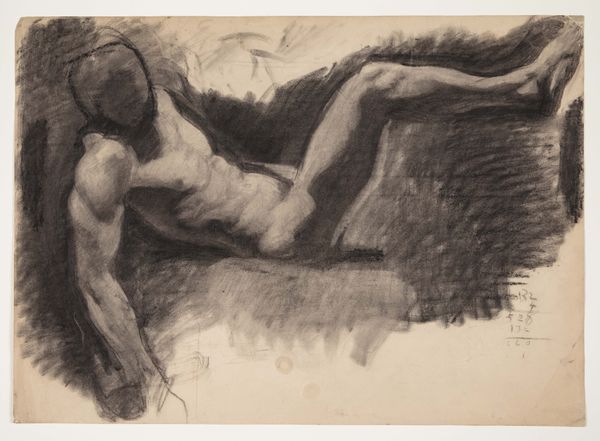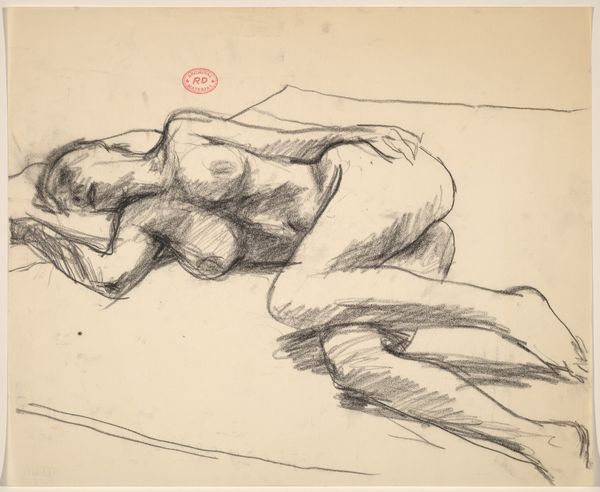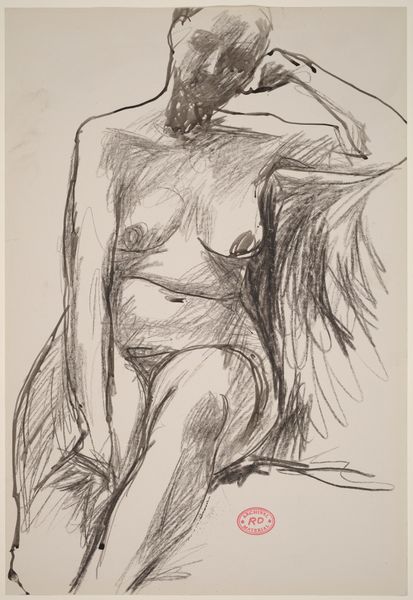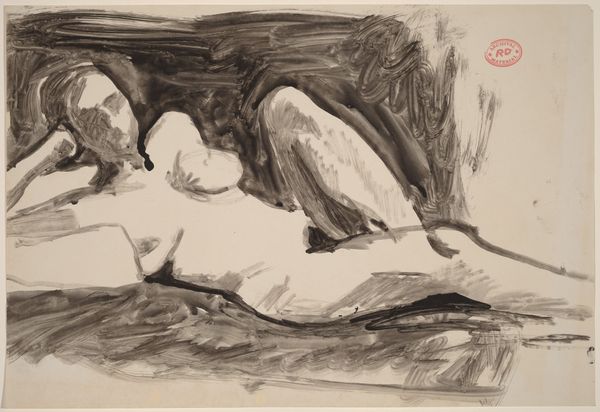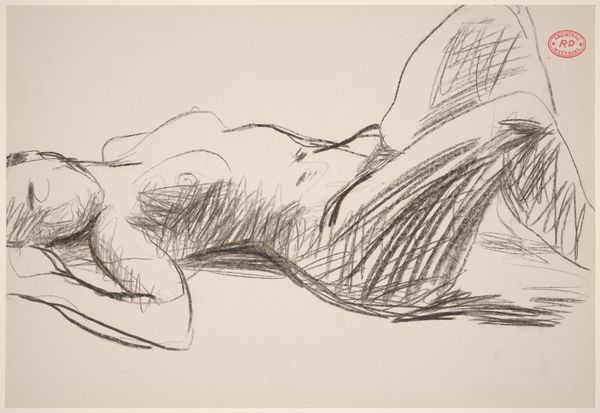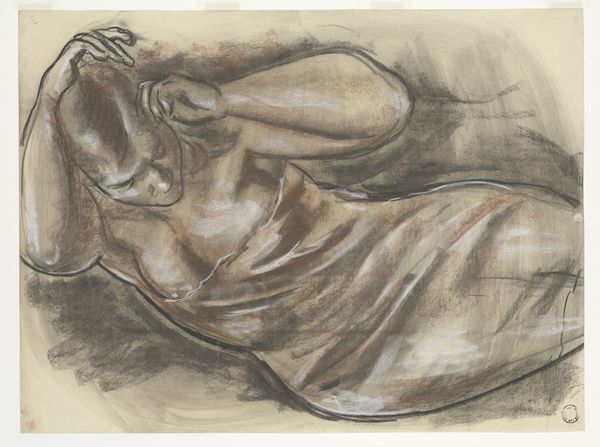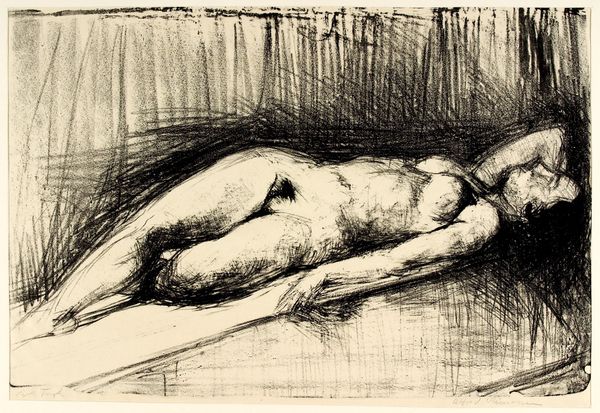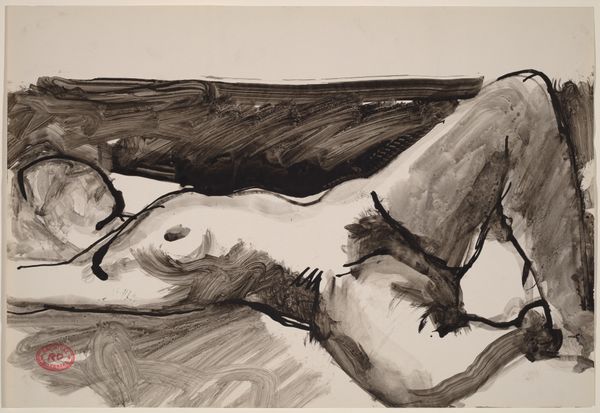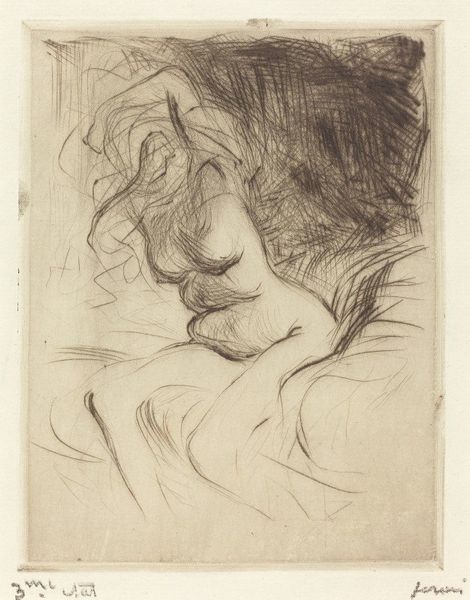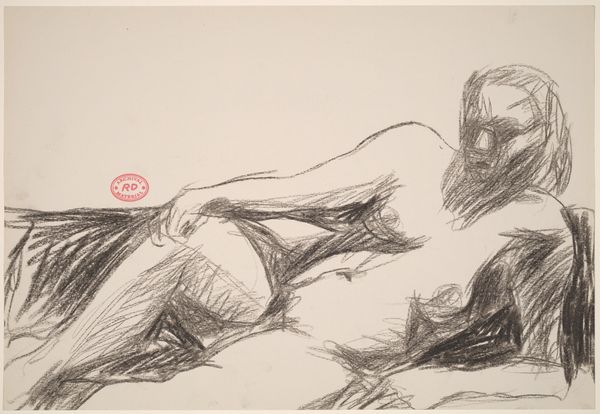
drawing, charcoal
#
portrait
#
drawing
#
charcoal drawing
#
figuration
#
portrait drawing
#
charcoal
#
academic-art
#
nude
#
realism
Dimensions: 535 mm (height) x 675 mm (width) (bladmaal)
Curator: Oluf Hartmann rendered this charcoal drawing, "Liggende kvindelig model," sometime between 1901 and 1905. You can currently find it here at the SMK, Statens Museum for Kunst. Editor: There’s a fragility to it, almost a vulnerability. The loose strokes of charcoal, the way the figure seems to blend with the background, it all gives a sense of transient beauty, don’t you think? Curator: I do. It reflects a prevailing academic art style with clear references to realism of the time. You have to think about where such a piece was created, who was able to pose in such manner and the artistic circles informing choices related to theme and approach. Editor: It also invites consideration of the nude throughout art history, specifically through a lens of gender and power. Is this merely an exercise in capturing the human form, or does it engage in complex ways that reflect how women’s bodies have been, and continue to be, aestheticized? Curator: The setting here is really secondary, though, letting the focus rest on a detailed study of the human body. I find the softness of the rendering particularly intriguing—note the delicate handling of light and shadow that allows the subject to exist simultaneously as an idealized and yet naturalistic figure. Editor: Exactly. Even if it's a simple nude rendered in charcoal, it prompts reflections about its social and cultural meaning in its moment of production but also in the contemporary settings and what it means to view a drawing like this today. The relationship between the artist, the model, and the viewer is charged, demanding scrutiny. Curator: The fact that it's a study contributes to its immediacy, don’t you think? It provides insight into the artist’s process, but that it's available in the museum space makes it part of the larger history of art’s public accessibility. Editor: Yes, considering access, displaying art should always bring consideration to intersectional questions and the institutional and societal implications inherent in showcasing such pieces. I appreciate being prompted to ask those questions just through one glance at this piece. Curator: Exactly, thank you, this work presents a beautiful bridge between the past and our modern dialogues surrounding the body, art, and representation.
Comments
No comments
Be the first to comment and join the conversation on the ultimate creative platform.
